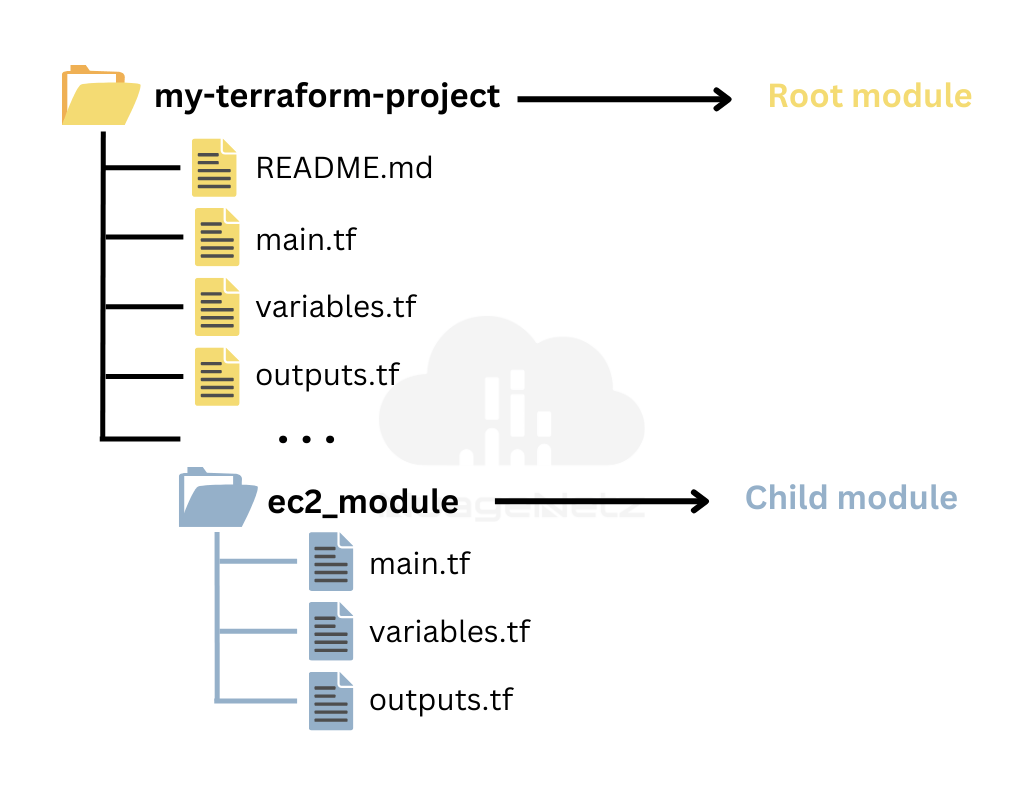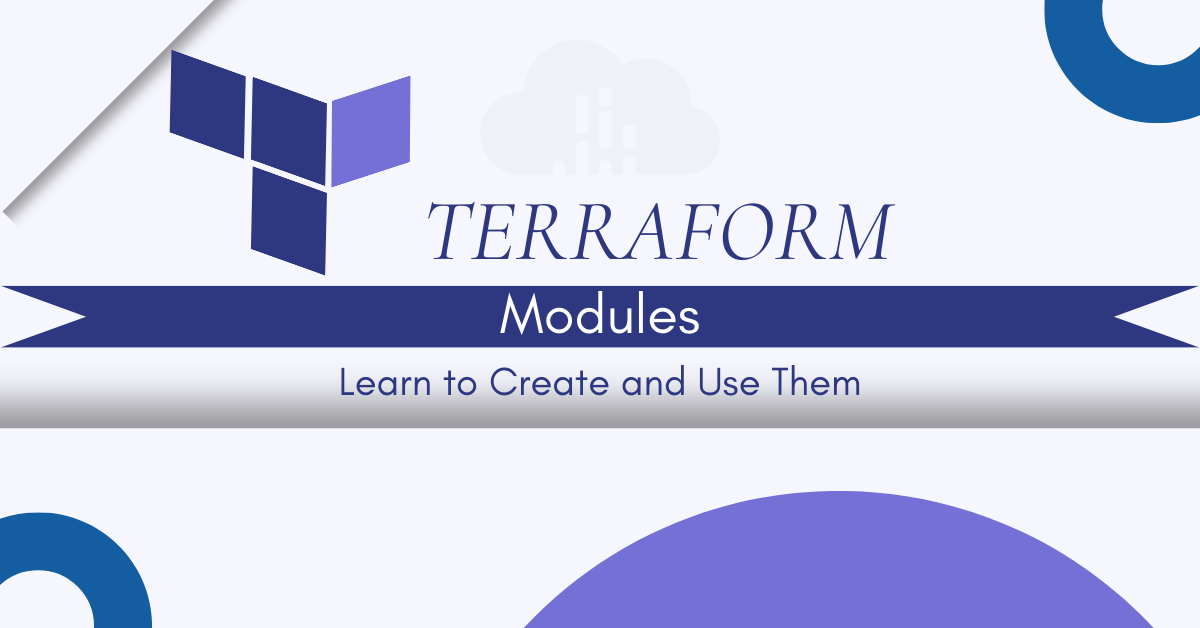What is a Terraform Module?
A Terraform module is a container for multiple resources that are used together. It allows you to group related resources, making your configuration more organized and manageable. By using modules, you can define reusable components that can be shared across different projects or teams.By using modules, you can:
Simplify Configuration: Break down complex configurations into smaller, manageable pieces.
Promote Reusability: Write a module once and use it across multiple projects.
Enhance Maintainability: Update a module in one place and propagate changes everywhere it’s used.
Why Use Terraform Modules?
Using modules in Terraform offers several advantages:
Reusability: Once you define a module, you can reuse it across different projects and environments. This reduces redundancy and saves time.
Organization: Breaking down your infrastructure into modules helps keep your configuration organized and easier to manage.
Consistency: Using modules ensures that your infrastructure is consistent across different environments. This reduces the risk of configuration drift and errors.
Abstraction: Modules allow you to abstract complex configurations into simple interfaces. This makes it easier for team members to use and understand the infrastructure.
Using modules can significantly enhance your infrastructure management by promoting best practices and reducing the risk of errors.
Module Structure -

To effectively utilize Terraform modules, it’s essential to understand their structure. A typical module might include the following files:
- LICENSE: Defines the license under which the module is distributed.
- README.md: Contains documentation on how to use the module.
- main.tf: The main configuration file that defines the resources.
- variables.tf: Contains variable definitions for the module.
- outputs.tf: Defines the outputs of the module.
Additional Files -
In addition to the main files, there are some other important files associated with Terraform modules:
- terraform.tfstate: Keeps track of the current state of your infrastructure.
- .terraform: Contains modules and plugins used to provision infrastructure.
- .tfvars: Used to set input variables for the module.
- .gitignore: Specifies files to be ignored by Git during version control.
How Modules Work
Modules simplify infrastructure management by allowing you to encapsulate related resources. For instance, if you need to create multiple EC2 instances with similar configurations, you can define a module that contains the common code for these instances.
Here’s how the process typically works:
- Create a module directory containing the necessary files.
- Define the common resources in main.tf.
- Use variables.tf to define input variables for customization.
- Call the module in your root configuration using the module block.
How to Create a Terraform Module?
Now that we understand the importance of modules, let’s create a simple Terraform module to manage an AWS EC2 instance.
Start by creating a directory for your Terraform project. Within this directory, create a subdirectory for your module. For example:
- Create a folder named my-terraform-project
- Within my-terraform-project, create another folder named ec2_module
cd ec2_module
Write the Module Configuration:
Within your module directory, create the necessary configuration files. Typically, a module includes:
- Add a main.tf file that defines the instance resource.
- Add a variables.tf file to define instance parameters.
- Add an outputs.tf file to output relevant information, such as instance IDs.
main.tf, define the resource for the EC2 instance. Use variables to parameterize the configuration:resource “aws_instance” “example” {
ami = var.ami_id
instance_type = var.instance_type
subnet_id = var.subnet_id_value
}
variables.tf, declare the variables:variable “ami_id” {
description = “The AMI ID to use for the EC2 instance”
type = string
}
variable “instance_type” {
description = “The instance type to use for the instance”
type = string
default = “t2.micro”
}
variable “subnet_id_value” {
description = “Subnet ID for the EC2 instance”
}
outputs.tf, define the outputs:output “instance_id” {
description = “The ID of the created instance”
value = aws_instance.example.id
}
output “public_ip” {
value = aws_instance.example.public_ip
}
How to Use a Terraform Module?
cd my-terraform-project
Integrating the Module into Your Terraform Configuration
Call the Module:
main.tf file in the root directory of your project to call the module:provider “aws” {
region = “us-east-1”
}
module “ec2_instance” {
source = “./my-terraform-project/ec2_module”
ami_id = “ami-123456789”
instance_type = “t2.micro”
subnet_id_value = “subnet-123456789”
}
- terraform init
- terraform plan
- terraform apply
Best Practices for Using Terraform Modules
- Use Version Control: Store your modules in a version control system like Git to track changes and facilitate collaboration.
- Document Your Modules: Provide documentation within your modules to explain their purpose, inputs, outputs, and usage.
- Use Semantic Versioning: Version your modules following semantic versioning principles to manage updates and compatibility.
- Leverage the Terraform Registry: Share your modules on the Terraform Registry to allow others to discover and use them.
Conclusion
Terraform modules are a powerful feature that can significantly enhance your infrastructure management. By understanding their structure, benefits, and best practices, you can create efficient, reusable, and organized Terraform configurations. As you continue to work with Terraform, leveraging modules will save you time and reduce the complexity of your infrastructure code.
If you have any questions or need further clarification on Terraform modules, feel free to reach out.
About Us
NuageNetz IT Services Pvt. Ltd. is a cutting-edge IT company that specializes in Cloud Computing, Web Development, DevOps and Agile Methodologies. Our team of skilled professionals is dedicated to providing exceptional services to our clients using the latest technologies and tools
Got Something to say about our Blog?
Have something to say? Drop your thoughts, feedback, or questions in the comments below!
